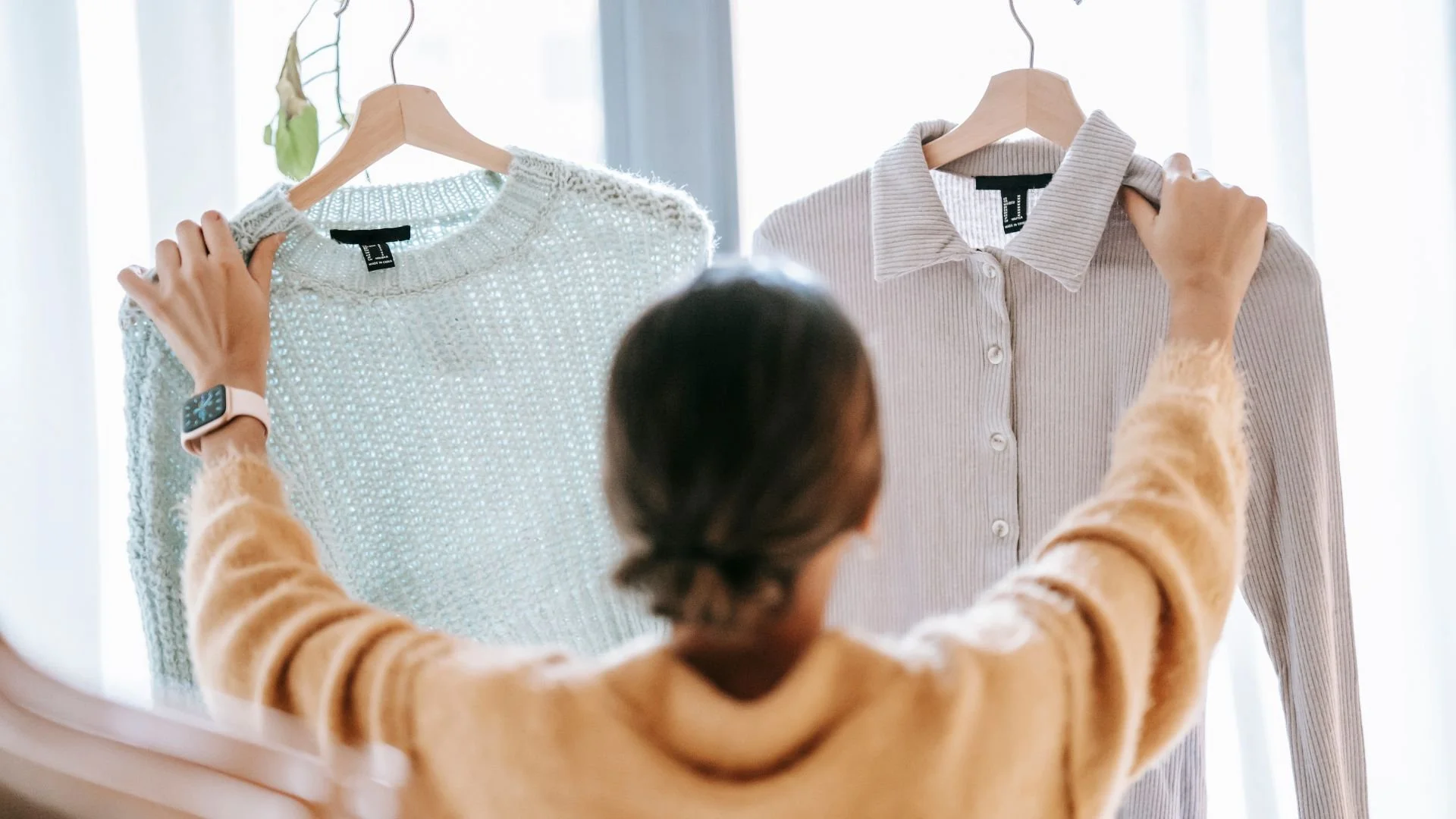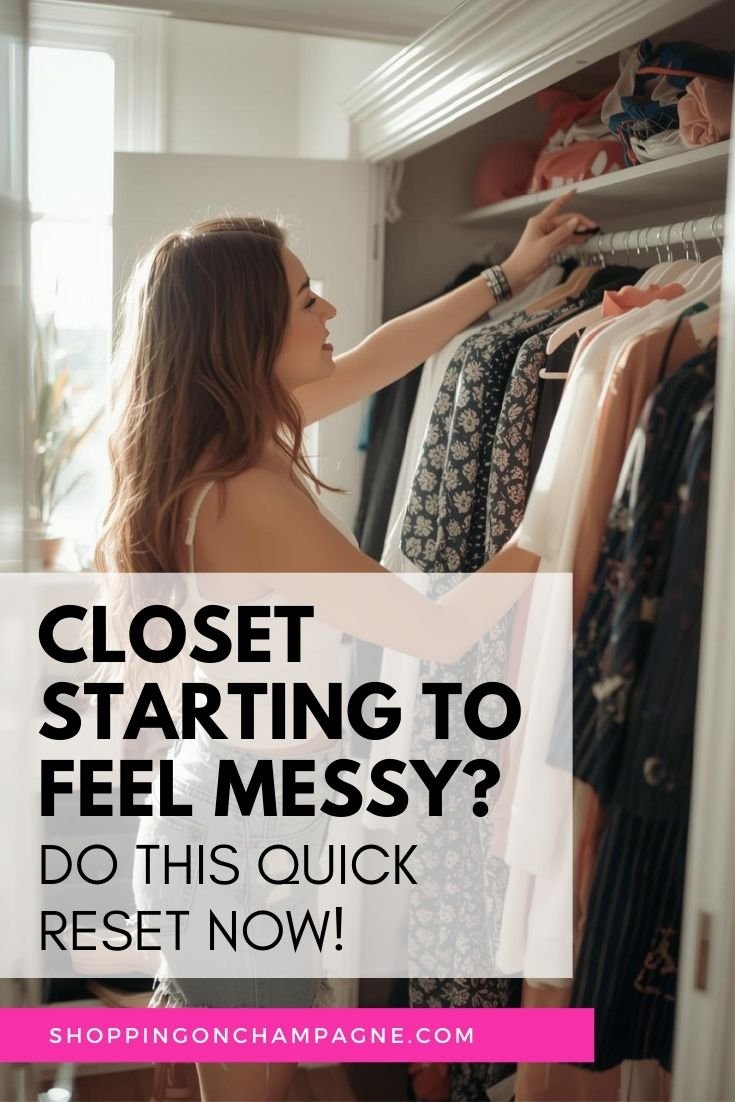How Many Clothes Is Too Many
Let's talk about having too many clothes. How much is too much? It's not just about having enough space in your closet or looking good, but also about being eco-friendly, sticking to your values, and feeling mentally okay. Let's dive into this topic by looking at some important things.
Related Post: Do I Have Too Many Clothes Quiz
Understanding the 'Excess' in Clothing
The idea of excess is highly subjective and varies widely among individuals. However, a practical way to gauge excess is by assessing the frequency of use and the emotional value of the clothes.
If you own items that haven't seen the light of day in over a year or frequently struggle to close your drawers or fit items into your closet, these might be signs that you've crossed into the territory of excess.
Why do I buy so many clothes?
Lots of women buy more clothes than they actually need, and it's not just a simple problem. There are many reasons for this, including how they feel inside, how they fit in with their friends and family, and what the culture around them is like. If we can understand these reasons, we can work on being more mindful when we go shopping and managing our wardrobe better. Here are some key factors to consider:
1. Psychological Appeal
Emotional Satisfaction: Shopping can be an emotional experience. Buying new clothes often brings a sense of instant gratification and joy, which can be particularly appealing during times of stress or low mood.
Retail Therapy: For some, shopping serves as a form of 'retail therapy,' a way to cope with emotional turmoil or stress. The act of purchasing new clothes can provide a temporary emotional lift.
2. Social and Cultural Influences
Keeping Up with Trends: Fashion trends are constantly evolving, and social media platforms often amplify this rapid cycle. The desire to stay fashionable and keep up with the latest styles can lead to purchasing more clothes.
Social Media and Influencer Impact: Influencers and celebrities regularly showcase new outfits and fashion, creating a sense of need or desire to replicate these looks. Social media can also create pressure to not repeat outfits frequently, especially in publicly shared photos.
3. Personal Identity and Self-Expression
Exploring Identity: Clothes are a means of self-expression and can be used to explore different facets of one's identity. This exploration can sometimes lead to purchasing a variety of styles and items.
Life Changes: Changes in personal circumstances like a new job, moving to a new city, or significant changes in body size can lead to buying more clothes to suit these new situations.
4. The Lure of Sales and Marketing
Sales and Discounts: Special offers, discounts, and sales can be tempting, leading to purchases that may not have been made otherwise. The idea of getting a 'good deal' can override the assessment of whether the item is truly needed.
Targeted Marketing: Personalized marketing strategies and targeted advertisements can create a perceived need for new clothing items.
5. Habits and Convenience
Fast Fashion: The fast fashion industry makes purchasing new styles on a whim easy and affordable, encouraging frequent buying.
Online Shopping Convenience: The ease of online shopping, with its vast options and home delivery, makes it simple to buy clothes frequently.
Addressing the Habit
Understanding why you buy so many clothes is the first step towards changing this habit. Here are some strategies to consider:
Mindful Shopping: Before making a purchase, ask yourself if it's something you truly need or will wear often.
Wardrobe Inventory: Regularly assess what you already have, which can reduce unnecessary purchases.
Set Budgets and Limits: Create a clothing budget or set a limit on the number of items you can buy in a certain period.
Explore Emotional Needs: If shopping is an emotional outlet, consider other activities that can provide similar satisfaction, like hobbies or exercise.
The tendency to buy many clothes stems from a blend of emotional, social, and practical reasons. By understanding these drivers and consciously addressing them, you can develop a more sustainable and mindful approach to your wardrobe, ensuring that your clothing purchases bring true value and joy to your life.
Related Post: How Many Clothes Should I Have In My Closet?
The Emotional Attachment to Clothes
Many people find themselves saying, "I have too many clothes, but I like them all." This is a common sentiment that highlights the emotional bond we form with our attire.
Clothes can represent memories, aspirations, or certain periods in our lives. While it's normal to cherish these connections, it's crucial to recognize when they start to impose a burden. The key lies in finding a balance between emotional value and practical utility.
The Consequences of Acquiring Too Many Clothes
Having an excessive number of clothes can have a range of impacts, from the personal to the global. Let's explore some of these consequences in more detail, including the often-overlooked issue of visual clutter.
Overwhelmed by Choices
When you have a ton of clothes in your wardrobe, it can make you feel like you've got nothing to wear. It's because having too many options can make it really hard to decide what to wear, leaving you feeling drained and frustrated. You might end up wasting a lot of time going through clothes that don't fit your current style, size, or lifestyle.
Visual Clutter and Its Impact
A cluttered wardrobe doesn’t just take up physical space; it also occupies mental space. Visual clutter can be overwhelming and stressful, making it hard to relax or focus. It's like having too many apps open on your phone – everything slows down. When your closet is packed with clothes, it’s challenging to see and appreciate the items you truly love and want to wear.
Impacts on Personal Style and Confidence
When your closet is filled to the brim, it can dilute your personal style. You might find yourself wearing things that don't truly resonate with who you are or how you want to present yourself. This can have subtle effects on your self-confidence and the way you carry yourself in social or professional settings.
Environmental and Ethical Considerations
On a larger scale, the environmental impact of excessive clothing consumption is significant. The fashion industry, particularly fast fashion, is a major contributor to pollution, waste, and resource depletion. Each garment produced requires water, energy, and other resources while also contributing to greenhouse gas emissions. By accumulating more clothes than we need, we feed into this unsustainable cycle.
Economic Implications
There's also an economic aspect to consider. Buying more clothes than necessary can be a substantial financial burden over time. This is especially true for items that are bought on a whim and rarely worn, representing wasted resources.
Addressing the Issue
Regular Decluttering: Make it a habit to declutter your wardrobe. This doesn't just free up space; it also helps you reconnect with clothes that align with your current lifestyle and preferences.
Mindful Purchasing: Before buying new clothes, ask yourself if it's something you truly need or will wear often. Being more intentional with your purchases can drastically reduce the number of unwanted items in your closet.
Invest in Versatile Pieces: Focus on acquiring versatile pieces that can be mixed and matched, reducing the need for a high volume of clothing.
Donate and Recycle: When you do decide to part with clothing, consider donating to those in need or look for recycling options. This approach helps extend the life of garments and reduces waste.
There's no one-size-fits-all answer to how many clothes are too many. It's a personal journey that balances your emotional connection to your garments, practicality, and the broader implications of consumer habits. By being more mindful about our clothing choices, we can create a sustainable, functional, and emotionally fulfilling wardrobe.
If you want a calm, step-by-step way to fix this at the closet level, I walk you through the entire process in The Style Refresh Blueprint.
It’s the system I created for women over 50 who are done guessing and want getting dressed to feel easy again.









